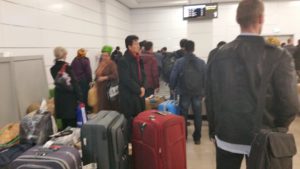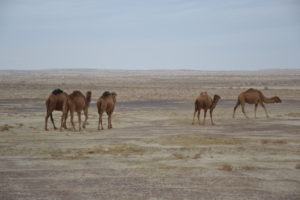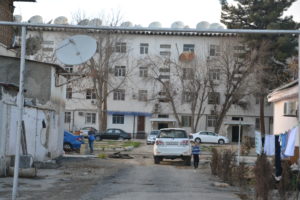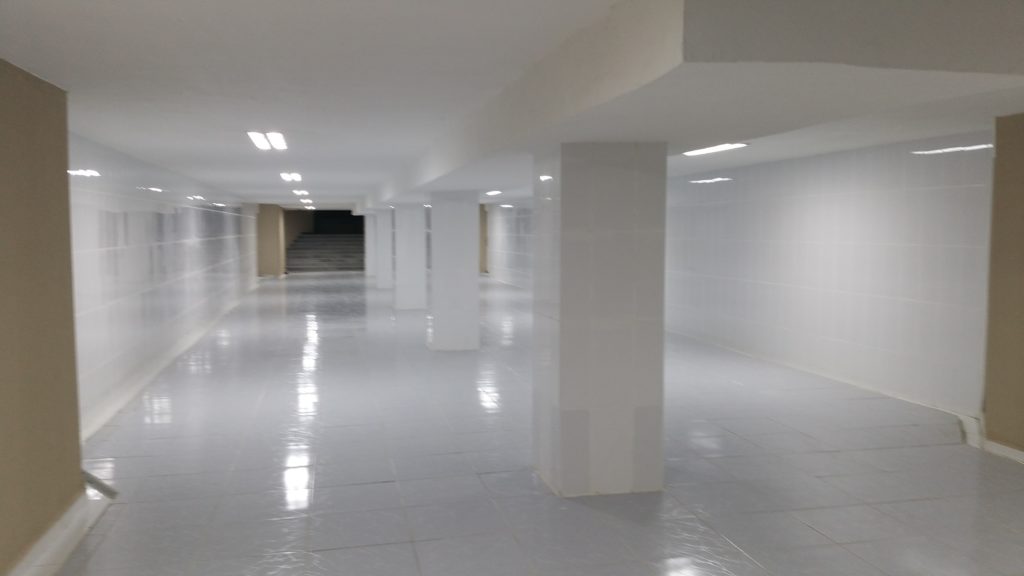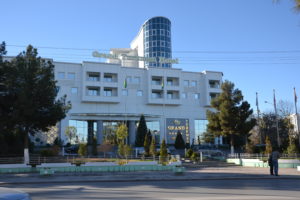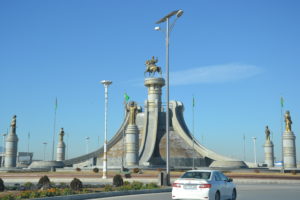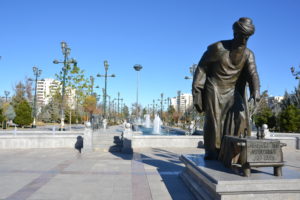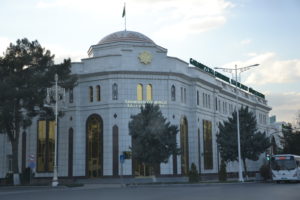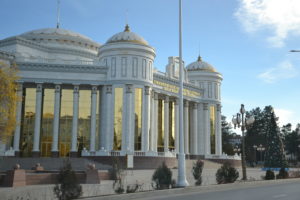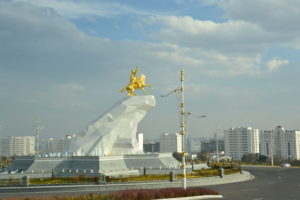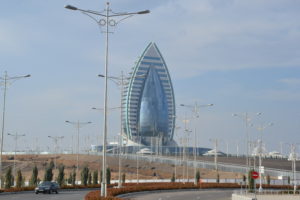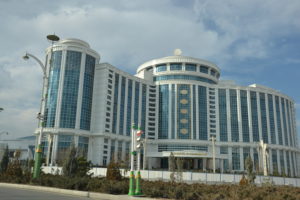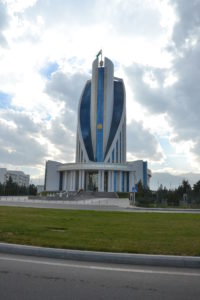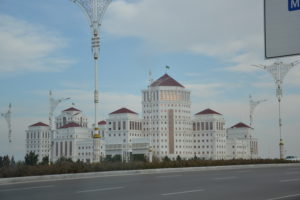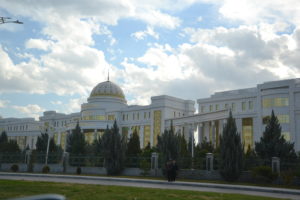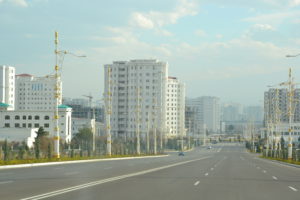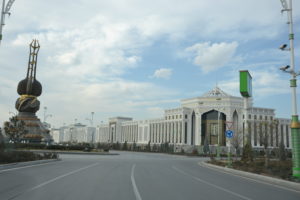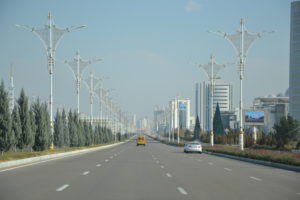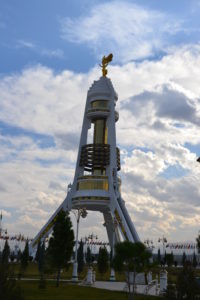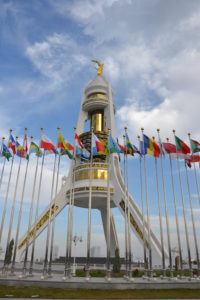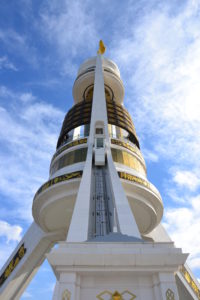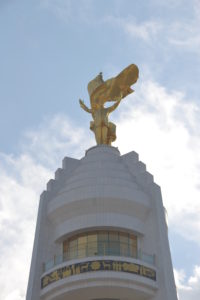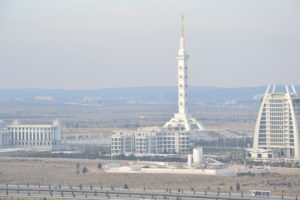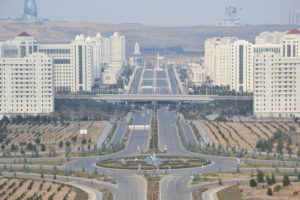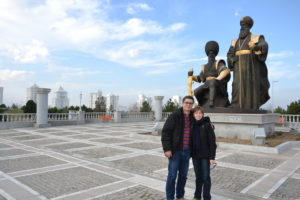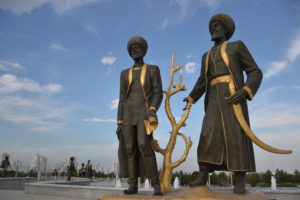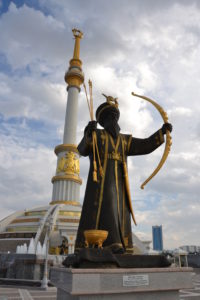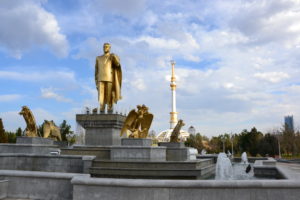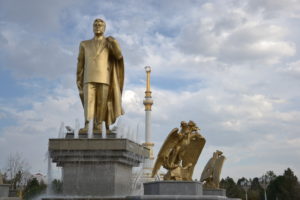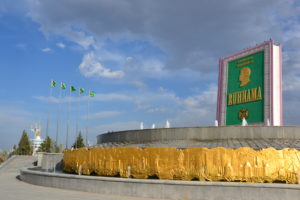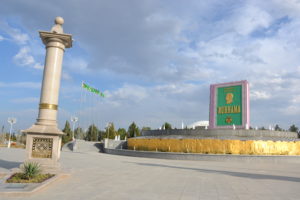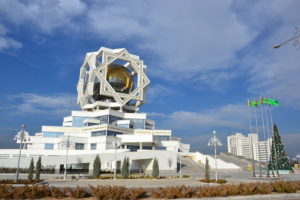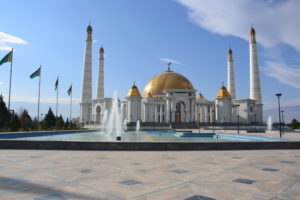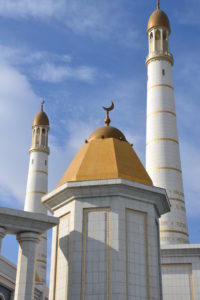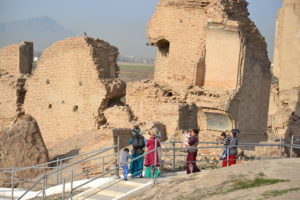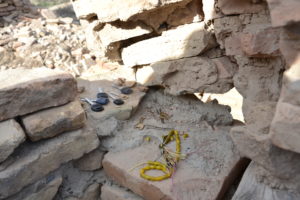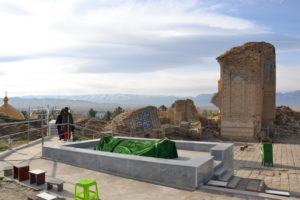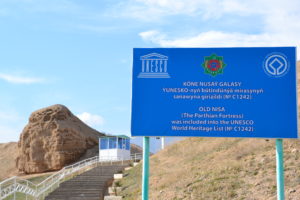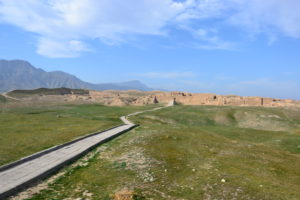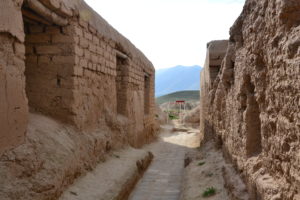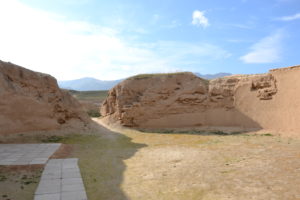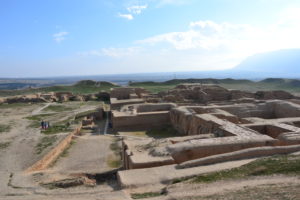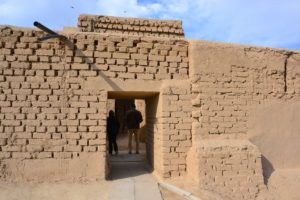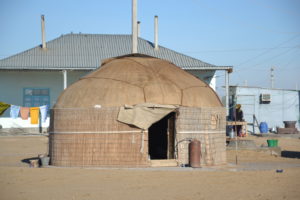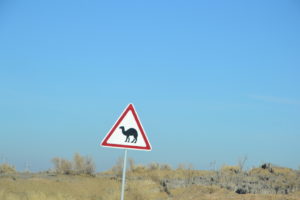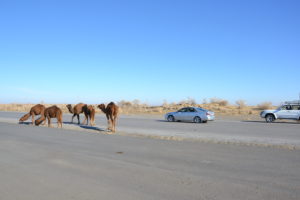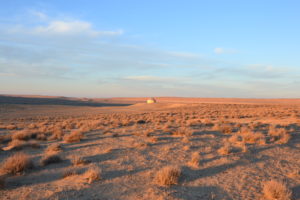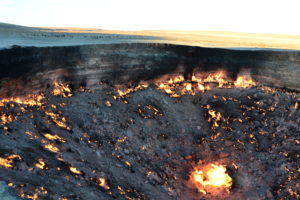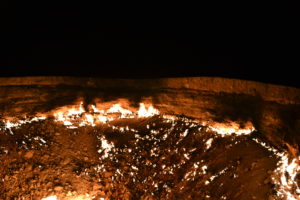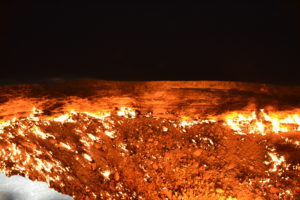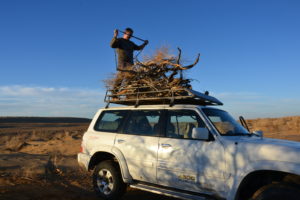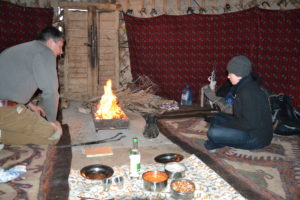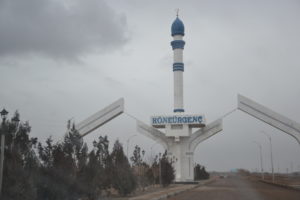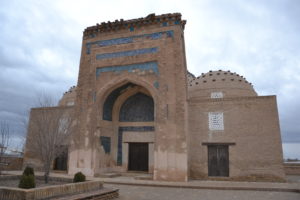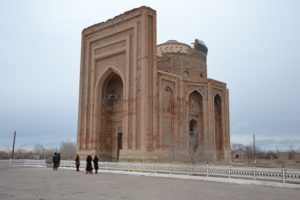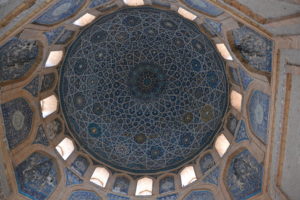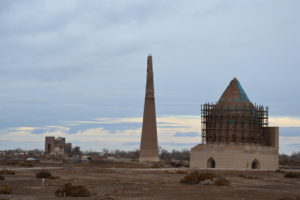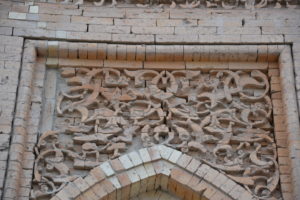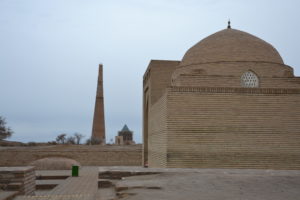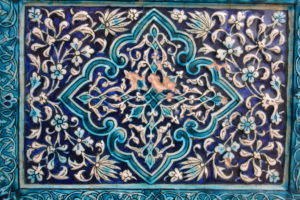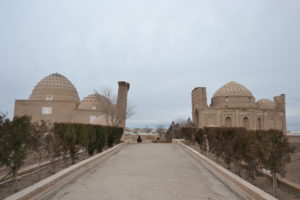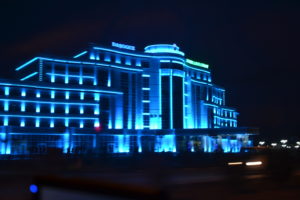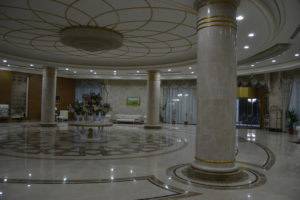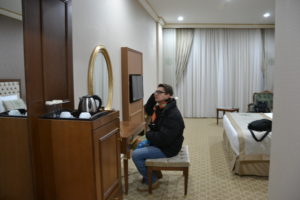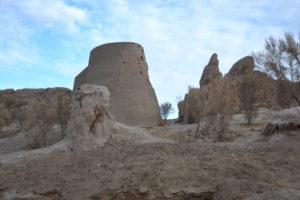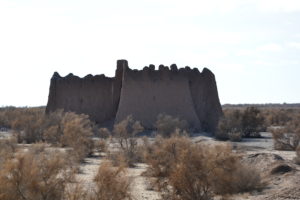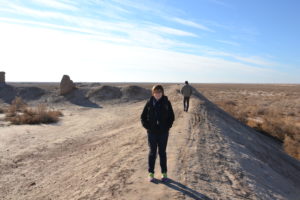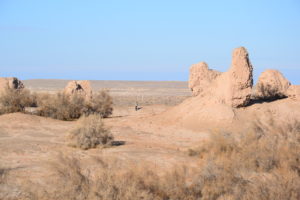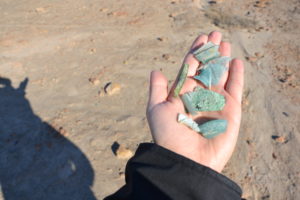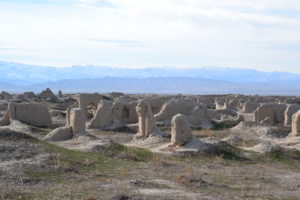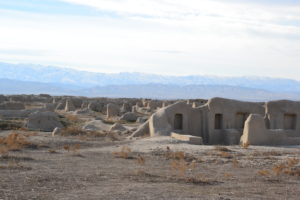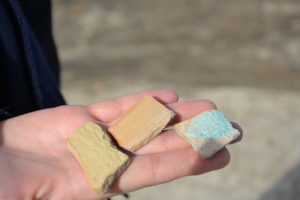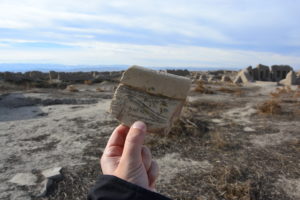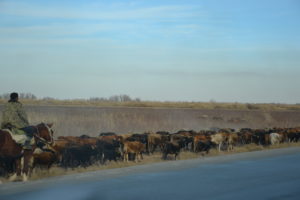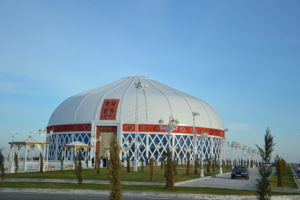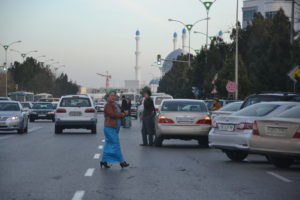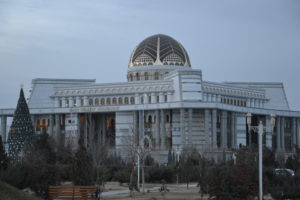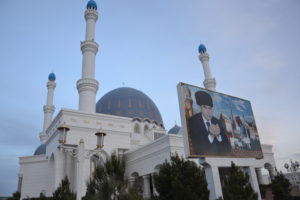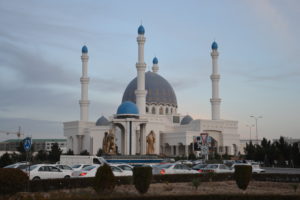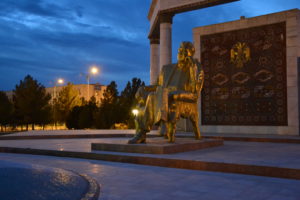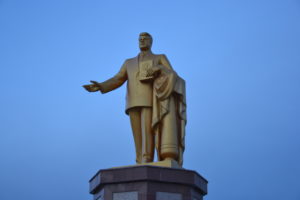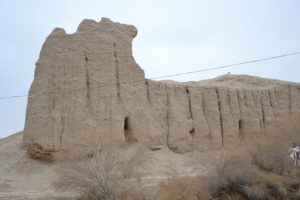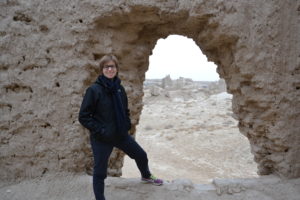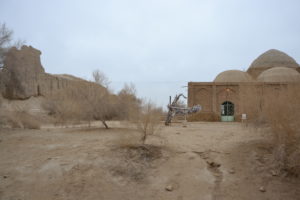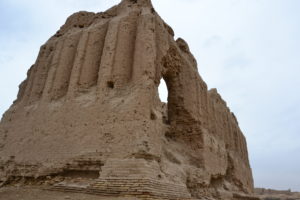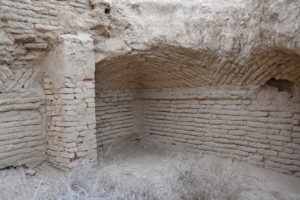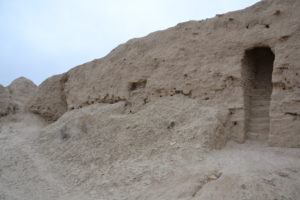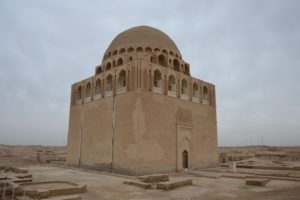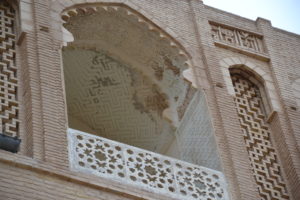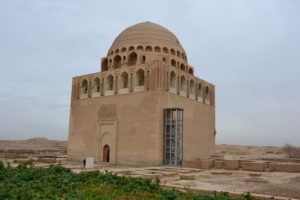Turkmenistan Travel Tips
How to get there?
2015 was our year of visiting some of the most curious countries in the world. After two weeks in North Korea in September 2015 we decided for the year-end to visit Turkmenistan. Continue reading and get our best adventures and travel travel tips for the surreal Turmenistan.
The adventure started already before we arrived in Turkmenistan. First, we have learned that it is not allowed to explore the country by yourself by car in case you do not only want to have a transit visa for three to five days. Therefore, we were looking for a rental car with a driver. Second, the process applying for a visa. Luckily, Turkmenistan has an embassy in Frankfurt. Therefore, we called them to ask for the procedure to apply for a visa. This was one of the shortest telephone call ever since without any “Hello” etc. they told us that we shall look in the internet and hang up.
This is what we did and completed the respective forms and brought them to the mailbox of the embassy together with our passports. After only 10 days we had the passports back in our mailboxes with the respective visa included. Afterwards we have read and also heart from other travelers that we were lucky received a visa since there are only a few granted each year with a minority for tourists.
We have decided to take a flight via Istanbul instead of a direct flight from Frankfurt to Ashgabat. The main reason were the reports about the domestic airline. In Istanbul our flight was departing directly besides the gate where the flights to Kabul departed. Seeing people sitting at the gate in handcuffs was a strange feeling. Chaotic situation also at the Ashgabat airport where it was already hard to get to the luggage strap since it was very crowded with people and suitcases as well as parcels.
Our route through the country
We have determined our route together with Ayan Travel. They have also booked all hotels for us and organized our English speaking driver Dmitri. He has picked us up at the airport and drove us the main attraction during our seven days in Turkmenistan. In the cities we were allowed to walk around on our ones. In general our driver has even not stayed in the same hotel as we did.

Before getting back from our trips through Turkmenistan to Ashgabat we always had to stop at a car wash since it is not allowed to have a dirty car in Ashgabat.
Ultimate travel tips in Turkmenistan
Ashgabat
We arrived at the airport in Ashgabat very early in the morning. After a short rest in the hotel lobby since the hotel was not really open, we started our exploration of Ashgabat. Ashgabat is listed in the Guinness Book of World Records due to the highest concentration of white marble buildings in the world. The reason is that the president loves the white color.
This is also reflected in the color of the cars. We have never seen so many cleaning crews who clean the sculptures, fountains and the ground (!) of the parks throughout the day. The following picture shows an underground passageway to cross the streets – incredible clean.
Government buildings
Since our hotel Grand Turkmen is located in the city center close to the government area, we explored the area by walking. Unfortunately, we cannot show you many pictures of these impressive government buildings since it is forbidden to take photos of them. In addition, we were asked twice by police men to delete all pictures on our camera. They didn’t let us go without checking our camera by their own. Even stopping and starring at the buildings is forbidden. If you do it anyway, you are very clearly told to move on.
Turkmen architecture
Ashgabat as the white city has a curious architecture. Since we were driving through Ashgabat on 1st of January, the streets were quite empty. Throughout the city statues and pictures from the president are present everywhere.
Arch of Neutrality
The Arch of Neutrality is the highest building in Ashgabat. With its 95 meters and was relocated in 2011 from the independence place to a site at the South of the city. The monument stands on three feet; on its top is a golden statue of the former Turkmen president. Form the top viewing platform we enjoyed a great view over the area.
Independence Monument Ashgabat
The design of the Independence Monument was inspired by traditional Turkmen tents (yurts). Based on the year of independence 1991 the tower is 91 meter high with a golden steel construction on top. The building is surrounded by green landscaping. It encompass 27 heroic statues of Turkmen leaders and a fountain with a statue of Turkmenbashi. The park includes a gigantic replica of the main book Ruhnama. It stands there in bright pink and green that could have been opened.
Wedding Palace
The first five floors of the Wedding Palace are in the shape of a rotating Turkmen star. The remaining five floors are in the shape of a sphere resting on this Turkmen star and surrounded by it are five other Turkmen stars. On both surfaces of the glass sphere are remarkable titanium maps of Turkmenistan.
In addition to the halls for weddings and marriage ceremonies, the building also includes several other units such as a hotel, a shopping center, grooms’ rooms, waiting rooms, cafeterias and foyer rooms.
Turkmenbashi Mosque (outside of Ashgabat)
Turkmenbashi Mosque is approx. 20 minutes outside of the city and is the largest mosque in Turkmenistan. The magnificent building made of the finest marble and granite with an imposing gilded dome was built at the site where Turkmenbashi’s mother and two brothers died in a severe earthquake. The four minarets with the height of 91 meters represent the year of independence of 1991 and are decorated with sayings from Ruhnama (Turkmenibashi’s main book).
Anau Mosque
12 km outside from Ashgabat in the direction to Mary lies the Anau mosque. This mosque was built around 1455 on the ruins of a fortress. The former powerful outlines of the mosque were visible from a great distance. Still today you can see the colorful mosaic decorations. The mosque was destroyed by the 1948 earthquake. Nevertheless, the mausoleum of a sheikh located nearby the mosque serves as a pilgrimage site.
Nisa fortress (UNESCO World Heritage)
Parthian Fortresses of Nisa was founded in the third century BC and was the most important city of the Arshakid Dynasty. Many temples and palaces, treasuries, reservoirs, warehouses and houses were built in Old Nisa. The powerful fortress walls, nine meters thick, were fortified with forty-three tall towers.
Erbent Desert Village
On our way to Darvaza we stopped en-route at a traditional desert village (Erbent Desert Village) to see the everyday life if Turkmens living in the desert. The people are living the traditional way in a clay house with a yurt next to it. The village is famous for felt products in particularly high quality. Honestly, we felt unwell walking through this small village since we do not believe that they are used to tourists and we didn’t want to bother them in their daily life.
Darvaza (gateway to hell)
The reason for this crater is not sure but the most probable cause is that during drilling for natural gas the stone collapsed. There were fears that toxic gas would leak out, endangering nearby settlements. To avoid this, it was decided to set it on fire. Against the assumption that it will turn off after a couple of days, it is burning for decades already. Another possibility is that the crater was formed naturally, possibly by a lightning strike.
The crater with its diameter of 70 meters is not easy to find since no signs are available. But our driver Dmitri was used to drive tourists to this hot spot so it was no problem for him to find the way.
We spent the night nearby the crater in a traditional yurt so that we had the possibility to walk in the night to the crater. This was also the reason why we stopped on our way to the crater to collect some wood. Dmitri prepared on the fire a dinner with traditional salads for us inside of the yurt. Since it was end of December it was pretty cold so that the fire inside the yurt had to burn the whole night.
Kunya Urgench (UNESCO World Heritage)
After that quite short, freezing night in the yurt we spent the next morning with Dmitri in the car. Our target for the day was Kunya-Urgench located in the north-western part of Turkmenistan. The ride of around 300 km went quick by as the roads were pretty good and without much traffic. Kunya-Urgench as part of the Turkmenistan UNESCO world heritage sites was an ancient regional capital as part of the Achaemenid Empire and saw its golden times between the 11th and 16th century.
The site contains a series of well-preserved monuments like the 60-m high minaret, a mosque, mausoleums and remainings of a caravansary. Especially Paul who is a big fan of Islamic architecture went absolutely crazy. He was jumping from one monument to the next, taking tones of pictures and it was difficult to get him back to the car.
Dashoguz
Izmukshir and Shassenem fortress
On our way back to Ashgabat we stopped at Izmukshir and Shassenem fortresses what is part of the tentative UNESCO World Heritage for the silk road in Turkmenistan. The fortresses just lies 25 km to the south-west of Dashoguz in the desert.
Only ruins of ancient the fortress city are visible that are mainly covered with sands. The fortress ruins are located in the territory of the historical and cultural reserve Kunya-Urgench. The ruins show how huge the fortresses must have been in the past.
Mary
Abiverd medieval fortress
Before arriving in Mary we stopped at Abiverd medieval fortress. Abiverd was once an important trading town and a key link on the Silk Road between Nisa and Merv. Abiverd in its heyday had a sophisticated system of water supply, produced highly regarded pottery and minted its own coins. The present-day site offers only a hint of these past glories but the many splits on the ground give an impression of the richness of the town.
Impressions from the drive to Mary
The pictures in the middle shows a truck with the main export product of this area – cotton – and world’s largest yurt.
Mary
Mary formerly known as Merv is the central city for cotton and natural gas production. The ruins of the ancient city Merv are located nearby. The ancient city of Merv was an oasis city on the Silk Road. It was destroyed in the 12th century by the Mongols and again in the 19th century. In Mary we have visited the Gurbanguly Hajji Mosque and made a walk through the city. Of course, we also discovered some examples of the cult of personality of Turkmenibashi.
Merv (UNESCO World Heritage)
In the morning we continued our journey to Merv which is another UNESCO World Heritage site with the official name State Historical and Cultural Park “Ancient Merv”. The site is one of the oldest and best preserved cities in the oasis along the historical Silk Road in Central Asia. During the 12th century, Merv became one of the largest cities in the world with a population of around 500,000. After the invasions by Mongol hordes in the 13th century, the city started loosing its importance and by the 1800s was completely deserted.
During our half-day trip, we had a chance to visit one of the oldest parts of the complex which is the citadel fort called Erk Gala, built in the 7th century BC.
We also visited the Sultan Sanjar mausoleum which is one of the best preserved structures and built around the 12th century. However, most impressive are the so called Great ant Little Kyz Qala with its huge mud brick walls of more than 10m. The former probably served as the semi-fortified home of an important official, perhaps even the governor of Merv. Walking along these ancient buildings gave us the feeling traveling back in history.
Our recommendations for Turkmenistan
Travel guide
For our Turkmenistan travel tips we relied again to our favorite travel guide Stefan Loose. It includes for Turkmenistan the main sites that are possible to visit.
Explore further countries:
Continue reading in the most popular blogs:
- Our travel packing list
- Slovenia and Austria travel tips
- Georgia travel tips
- New Zealand travel tips
- North Korea (DPRK) travel tips
